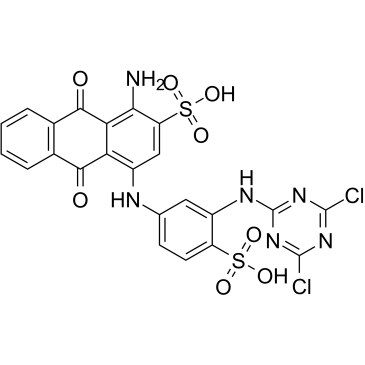Biological decolorization of reactive anthraquinone and phthalocyanine dyes under various oxidation-reduction conditions.
Young H Lee, Rosalyn D Matthews, Spyros G Pavlostathis
Index: Water Environ. Res. 78(2) , 156-69, (2006)
Full Text: HTML
Abstract
The decolorization of two anthraquinone dyes (Reactive Blue 4 [RB4] and Reactive Blue 19 [RB19]) and two phthalocyanine dyes (Reactive Blue 7 [RB7] and Reactive Blue 21 [RB21]) was investigated at an initial dye concentration of 300 mg/L using an unacclimated, enrichment culture. The culture was fed a mixture of organic compounds and maintained initially under aerobic conditions, and then progressively developed anoxic/ anaerobic conditions. Biotransformation-related decolorization of the dyes did not take place under aerobic conditions, but use of the feed organic mixture and biomass production by the enrichment culture were not affected. Complete ammonia removal occurred in the control and all dye-amended cultures. The development and extent of nitrification were much lower in the latter cultures, in which ammonia removal via air stripping was the dominant mechanism. Prolonged incubation of the culture under anoxic/anaerobic conditions with multiple carbon source additions resulted in a high decolorization extent of anthraquinone dyes (over 84%) and only partial decolorization of phthalocyanine dyes (49 to 66%). Development of significant methanogenic activity took place in the control and, to a lesser extent, in the two phthalocyanine dye-amended cultures, but the anthraquinone dyes severely inhibited the development of methanogenic activity. The RB4 and RB19 decolorization was attributed to nonreversible, microbially mediated dye transformation(s), demonstrated by the accumulation of decolorization products with absorbance maxima in the 420- to 460-nm region. The decolorization of RB4 and RB19 followed Michaelis-Menten kinetics. At an initial dye concentration of 300 mg/L, the observed maximum decolorization rate per unit biomass was 9.1 and 37.5 mg dye/mg volatile suspended solids x day for the RB4 and RB19, respectively. Thus, partial decolorization of reactive phthalocyanine dyes and extensive biological decolorization of reactive anthraquinone dyes is feasible only under anoxic/anaerobic conditions.
Related Compounds
| Structure | Name/CAS No. | Molecular Formula | Articles |
|---|---|---|---|
 |
procion blue MX-R
CAS:13324-20-4 |
C23H14Cl2N6O8S2 |
|
Photocatalytic degradation in aqueous solution using quantum...
2010-11-01 [J. Colloid. Interface Sci. 351(1) , 210-6, (2010)] |
|
Investigation on the downregulation of dopamine by acetamino...
2013-01-15 [Biosens. Bioelectron. 39(1) , 139-44, (2013)] |
|
Novel insoluble dye-labeled substrates for screening inulin-...
2007-05-01 [J. Microbiol. Methods 69(2) , 353-7, (2007)] |
|
Purification of polyphosphate and ATP glucose phosphotransfe...
1993-02-01 [Protein Expr. Purif. 4(1) , 76-84, (1993)] |
|
Modeling wastewater biodecolorization with reactive blue 4 i...
2012-11-01 [Bioresour. Technol. 123 , 452-62, (2012)] |